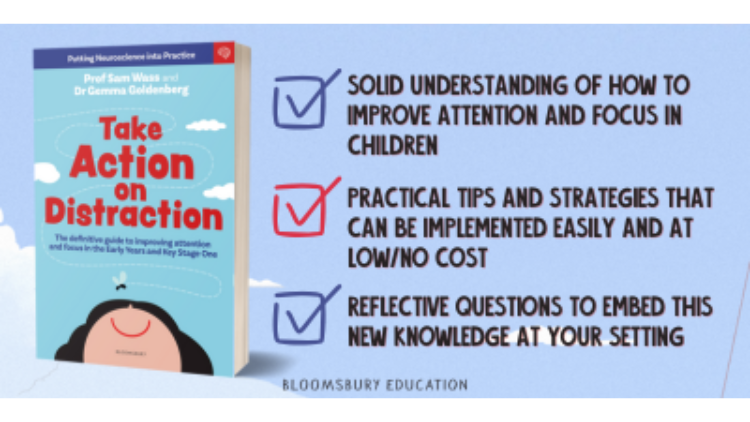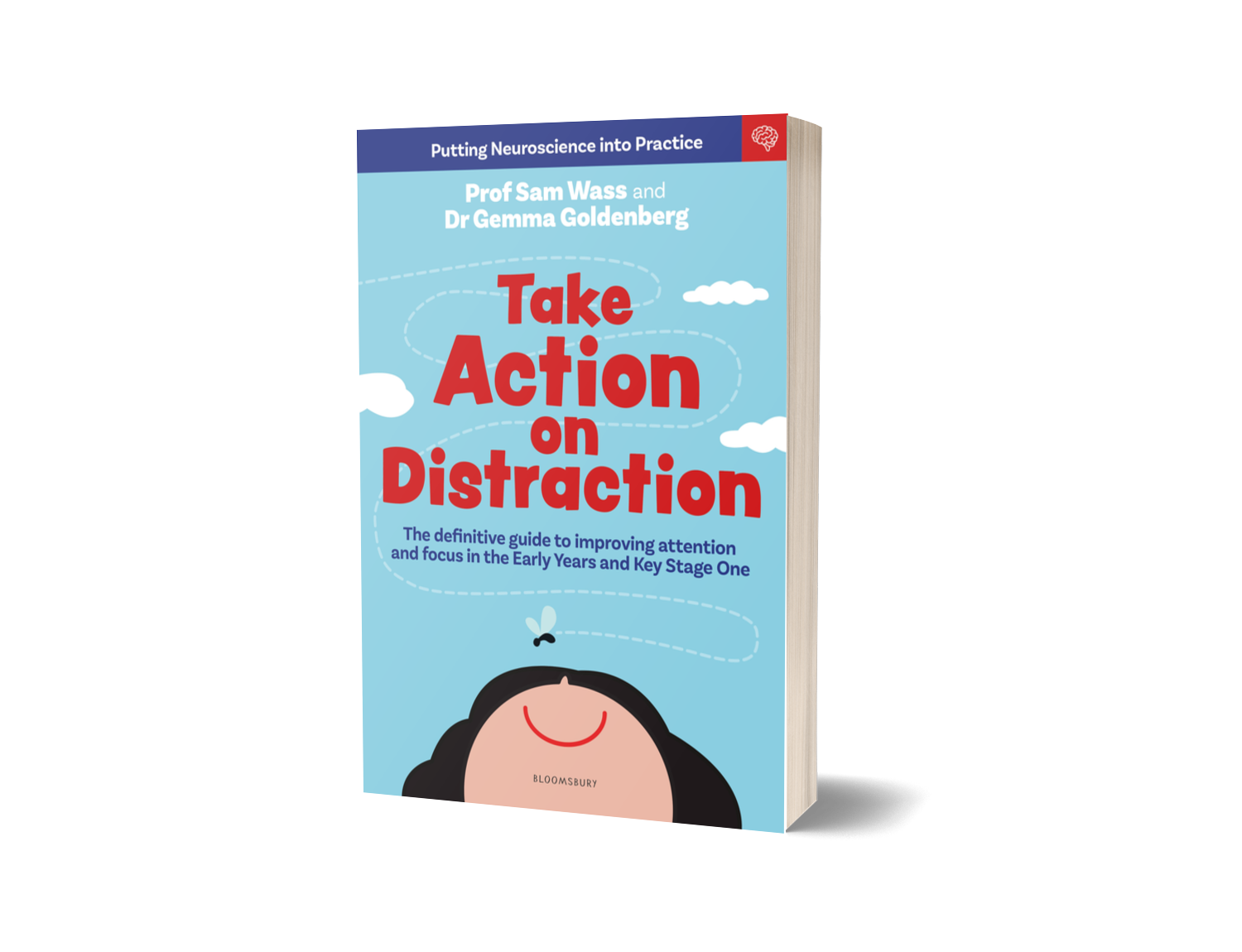By Dr Gemma Goldenberg and Prof Sam Wass
Do we have an attention crisis?
People working with young children seem increasingly concerned about children’s inability to focus and engage deeply in activities. We’re hearing that children flit from one activity to another, forget instructions almost immediately, and struggle to sit still during stories and seated activities.
Many people blame technology, suggesting that children are used to fast-paced media, making everything else seem boring in comparison. But have modern children really lost the skill of paying attention?
Taking action on distraction
There is a lot that recent neuroscience has taught us about how young children’s brains work. We know that in many cases, children are actually paying too much attention not too little, and we also now know that a young child’s attention is very different to an adult’s. Understanding this can help us view attention differently. To help tackle misconceptions about attention, and support children who are struggling with focus, we wrote a book for Early Years practitioners which translates attention research into accessible summaries and practical tips for working with young children.

Attention ‘capture’ and attention ‘control’
One of the most important distinctions we describe in the book is the difference between two contrasting types of attention: attention capture and attention control.
Some things capture our attention without us having to try to focus on them at all. Think about how hard it is to ignore a pop-up advert online, or how children react when there is a fly buzzing around the room. Things which move and make noises grab our attention effortlessly. The same is true of flashing lights and bright colours.
Why is it that these things are so hard to ignore? It’s actually for evolutionary reasons. As early humans, when something in our field of vision moved, it was probably a predator that wanted to eat us, or something that we wanted to hunt and eat for ourselves! So, for survival reasons our brains are wired to notice movement and noise, and to pay close attention to them. The brain networks involved in this type of attention capture develop very early, so even babies will naturally pay attention to lights, colour, movement and noise, which is why so many baby toys incorporate these features. These days, advertisers and social media companies are also great at exploiting this natural instinct for their advantage, we are constantly fed a never-ending loop of moving images with sound which are designed to grab our attention and hold it for as long as possible.
In contrast, attention control is our ability to resist such distractions and choose what to concentrate on, controlling the focus of our attention like a spotlight. So when we choose to ignore the noise coming from the radio and focus on reading a book instead, we are using attention control. The problem is, the brain networks that are responsible for attention control are some of the slowest to develop, they’re still developing even in a 20-year-old! Children in the Early Years have not formed these networks fully, so attention control is very hard for them, in some cases even impossible.
Again, again, again!
Another thing which we know drives attention is predictability and repetition. Our brains are prediction machines, constantly making and testing predictions about what will happen next, it’s one of the main ways that children learn. Children can direct their attention more easily when they know what to expect. This is why in the book we suggest practical tips such as:
- Tell children what to look out for in advance e.g. “Listen out for the ‘beep beep’ when I play this song.”
- Let children repeat the same activities over and over again, for example read the same stories, listen to the same nursery rhymes and allow them to play with the same favourite toy daily (if they are still driven to repeat something- they are still learning from it!)
- Ask children to guess the answer to a question before revealing it e.g. “What do you think might happen next?”
- Establish predictable routines e.g. daily routines, morning songs and other rituals
All of these examples help children’s brains predict what might happen next, which supports them to attend to, and process the information when it arrives. We explain more about the neuroscience behind this in the book.
Where does attention flourish?
Another key message from the book is that attention difficulties aren’t solely due to brain differences; a child’s ability to focus also depends on their physical environment. Several chapters of the book explore how noise, visual clutter, and outdoor settings impact attention. We also discuss how adjusting aspects of the environment can help regulate children’s arousal levels, which in turn affects their attention control.
We know that young children find it much harder to filter out distractions than older children do, they also struggle more to tune into an adult’s voice when there is background noise. The ability to separate out the sound of one voice from other chatter doesn’t finish developing until children are around 12 years old.
In the book we share lots of practical tips about how you can tackle the challenge of working with children who don’t yet have attention control, by adapting the environment. Here are a few examples:
Adapting the learning environment to support attention: Practical tips
- Reduce distractions in the environment e.g. switch the television or radio off when trying to communicate with children
- Avoid having excess visual clutter (e.g. lots of posters stuck to the walls or clutter on the table) as these create more information that children have to process. Complex patterns, multiple colours and lots of edges are particularly taxing for children to process.
- Use attention capture to your advantage by incorporating sound, movement and colour into your activities. This will help children to focus on you and what you’re doing, rather than other distractions. Use visual resources, gestures and intonation in your voice to capture children’s attention more easily.
In conclusion, the idea of an attention crisis is more nuanced than it seems. While technology and environmental factors play a role in how children focus, the developmental differences in how young children manage attention are also crucial. Understanding the distinction between attention capture and attention control helps us see that attention struggles are a natural part of growth. Creating supportive environments and using developmentally appropriate strategies can help nurture children’s attention skills. Rather than viewing these challenges as deficits, we can see them as an opportunity to better understand how children experience the world around them.




